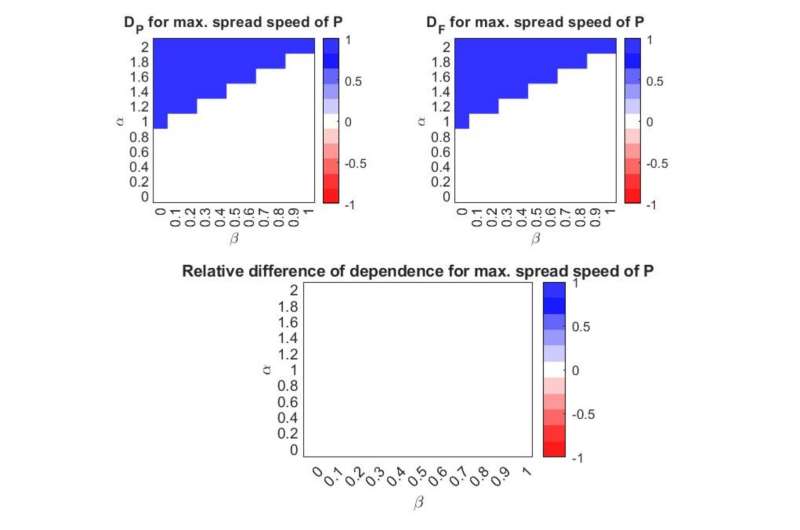This article has been reviewed according to Science X's editorial process and policies. Editors have highlighted the following attributes while ensuring the content's credibility:
fact-checked
peer-reviewed publication
trusted source
proofread
Understanding mutualism can help control the spread of invasive species

Cooperation between species to help each other's survival is known as mutualism. It is seen among many types of organisms, such as plants and fungi that exchange nutrients with one another, plants that provide bees with nectar in exchange for pollination, and sea anemones that provide protection for clown-fish in exchange for excreted nutrients.
Recently, scientists have found evidence that some invasive plants become even more invasive in the presence of helpful partners, as can happen with certain pine trees and fungi or fig trees and wasps. But other studies have suggested that species that didn't rely on mutualist partners were more invasive.
Recent research at the University of Minnesota, published in the journal Ecology, attempted to identify the conditions under which a mutualistic partner could make a species more or less invasive. To study this, they built mathematical models called integro-difference equations (IDEs).
IDEs take into account the effects of mutualism on growth and dispersal of species and are useful tools to model spatial processes. Mathematical models are helpful in understanding ecological processes like invasion that occur over many years and can be difficult to study in the field.
The team modeled a phenomenon called mutualism dependence, which measures how much a species depends on benefits from its partner for growth. Highly dependent species are often called "obligate mutualists" and lower dependent species are called "facultative mutualists." They then tried to understand how the invasive ability of a species varied as a function of its dependence on its partner.
The research found that:
- Based on how much nutrition (or other benefits) a partner provides, being more or less dependent on a partner could increase a species' invasiveness, as measured by its range expansion speed.
- Having too many partners could stop a species' invasion, as there is a large cost associated with supporting them.
- Mutualistic dependency modifies a species' spatial distribution, impacting whether it is more populous at the edges or center of its range.
- As invasive species become more widespread, this research could eventually help protect native habitats from mutualistic invaders. Understanding the mutualistic properties of an invasive species could help researchers identify ways to slow the invasion.
"Understanding the role of mutualisms is critical to preventing 'invasional meltdowns' which is a process by which mutualists accelerate each others' invasions in a positive feedback loop," said lead author Naven Narayanan Venkatanarayanan.
"Invasional meltdowns greatly speed up extinction of native species and communities. Future applications of this research include identifying and biologically controlling populations of mutualist partners of the invasive species, such as fungi."
More information: Naven Narayanan et al, Mutualisms impact species' range expansion speeds and spatial distributions, Ecology (2023). DOI: 10.1002/ecy.4171
Journal information: Ecology
Provided by University of Minnesota




















